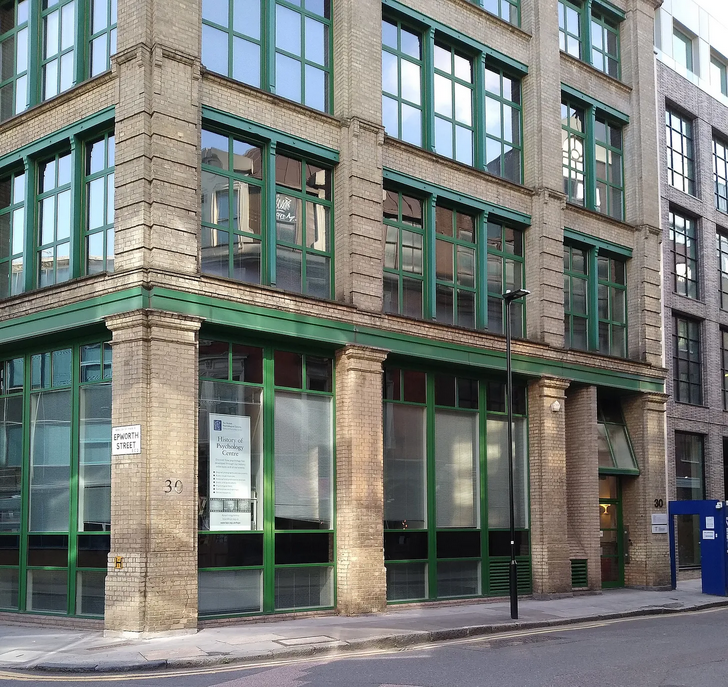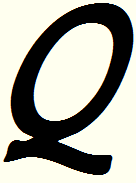 Rome’s successes at sea in turn set conditions for the Roman invasion of Anatolia, which will lead to the decisive battle at Magnesia, but of course in the midst of our naval narrative, we rolled over into a new year, which means new consuls. The Senate extended Glabrio’s command in Greece to finish the war with the Aetolians, but the war against Antiochus was assigned to Lucius Cornelius Scipio, one of the year’s consuls and brother of Publius Cornelius Scipio Africanus, the victor over Hannibal at Zama (202). There’s an exciting bit of politics behind Scipio getting the assignment (including his famous brother promising to serve as one of his military tribunes), but in a sense that’s neither here nor there. As we’ve seen, Rome has no shortage of capable generals. From here on, if I say “Scipio”, I mean Lucius Cornelius Scipio; if I want his brother, I’ll say “Scipio Africanus”.
Rome’s successes at sea in turn set conditions for the Roman invasion of Anatolia, which will lead to the decisive battle at Magnesia, but of course in the midst of our naval narrative, we rolled over into a new year, which means new consuls. The Senate extended Glabrio’s command in Greece to finish the war with the Aetolians, but the war against Antiochus was assigned to Lucius Cornelius Scipio, one of the year’s consuls and brother of Publius Cornelius Scipio Africanus, the victor over Hannibal at Zama (202). There’s an exciting bit of politics behind Scipio getting the assignment (including his famous brother promising to serve as one of his military tribunes), but in a sense that’s neither here nor there. As we’ve seen, Rome has no shortage of capable generals. From here on, if I say “Scipio”, I mean Lucius Cornelius Scipio; if I want his brother, I’ll say “Scipio Africanus”.
Scipio also brought fresh troops with him. The Senate authorized him to raise a supplementum (recruitment to fill out an army) of 3,000 Roman infantry, 100 Roman cavalry, 5,000 socii infantry and 200 socii cavalry (Livy 37.2.1) as well as authorizing him to carry the war into Asia (meaning Anatolia or Asia Minor) if he thought it wise – which of course he will. In addition to this, the two Scipios also called for volunteers from Scipio Africanus’ veterans and got 5,000 of them, a mix of Romans and socii (Livy 37.4.3), so all told Lucius Cornelius Scipio is crossing to Greece with reinforcements of some 13,000 infantry (including some battle-hardened veterans), 300 cavalry and one Publius Cornelius Scipio Africanus.1 That said, a significant portion of this force is going to end up left in Greece to handle garrison duty and the Aetolians. Antiochus III, for his part, spends this time raising forces for a major battle, while dispatching his son Seleucus (the future Seleucus IV, r. 187-175) to try to raid Pergamum, Rome’s key ally in the region.
Once the Romans arrive (and join up with Eumenes’ army), both sides maneuvered to try and get a battle on favorable terms. Antiochus III’s army was massive with lots of cavalry – 62,000 infantry and 12,000 cavalry, an army on the same general order of magnitude as the one that fought at Raphia – so he sought an open area, setting up his fortified camp near Magnesia, with fairly formidable defenses – a ditch with a double-rampart (Livy 37.37.9-11). Unsurprisingly, the Romans, with a significant, but smaller force, preferred a fight in more confined quarters and for several days the armies sat opposite each other with minor skirmishes (Livy 37.38).
The problem Scipio faced was a simple one: the year was coming to a close, which meant that soon new consuls would be elected and he could hardly count on his command being extended. Consequently, Scipio calls together his war council – what the Romans call a consilium – to ask what he should do if Antiochus III couldn’t be lured into battle on favorable terms. The answer he got back was to force a battle and so force a battle Scipio did, advancing forward onto the ground of Antiochus’ choosing, leading to the Battle of Magnesia.
We have two accounts of this battle which mostly match up, one in Livy (Livy 37.39-44) and another in Appian’s Syrian Wars (App. Syr. 30-36). Livy here is generally the better source and chances are both authors are relying substantially on Polybius (who would be an even better source), whose account of the battle is lost.
Antiochus III’s army was enormous, with a substantial superiority in cavalry. From left to right, according to Livy (Livy 37.40), Antiochus III deployed: Cyrtian slinger and Elymaean archers (4,000), then a unit of caetrati (4,000; probably light infantry peltasts), then the contingent of Tralli (1,500; light infantry auxiliaries from Anatolia), then Carian and Cilicians equipped like Cretans (1,500; light archer infantry), then the Neo-Cretans (1,000; light archer infantry), then the Galatian cavalry (2,500; mailed shock cavalry), then a unit of Tarantine cavalry (number unclear, probably 500; Greek light cavalry), a part of the “royal squadron” of cavalry (1,000; Macedonian shock cavalry), then the ultra-heavy cataphract cavalry (3,000), supported by a mixed component of auxiliaries (2,700; medium thureophoroi infantry?) along with his scythed chariots and Arab camel troops.
That gets us to the central component of the line (still reading left to right): Cappadocians (2,000) who Livy notes were similarly armed to the Galatian infantry (1,500, unarmored, La Tène infantry kit, so “mediums”) who come next. Then the main force of the phalanx, 16,000 strong with 22 elephants. The phalanx was formed 32 ranks deep, with the intervals between the regiments covered by the elephants deployed in pairs, creating an articulated or enallax phalanx like Pyrrhus had, but using elephants rather than infantry to cover the “hinges”. This may in fact, rather than being a single phalanx 32 men deep be a “double” phalanx (one deployed behind the other) like we saw at Sellasia. Then on the right of the phalanx was another force of 1,500 Galatian infantry. Oddly missing here is the main contingent of the elite Silver Shields (the Argyraspides); some scholars2 note that a contingent of them 10,000 strong would make Livy’s total strength numbers and component numbers match up and he has just forgotten them in the main line. We might expect them to be deployed to the right of the main phalanx (where Livy will put the infantry Royal Cohort (regia cohors), confusing a subunit of the argyraspides with the larger whole unit. Michael Taylor in a forthcoming work3 has suggested they may also have been deployed behind the cavalry we’re about to get to or otherwise to their right.
That gets us now to the right wing (still moving left to right; you begin to realize how damn big this army is), we have more cataphracts (3,000, armored shock cavalry), the elite cavalry agema (1,000; elite Mede/Persian cavalry, probably shock), then Dahae horse archers (1,200; Steppe horse archers), then Cretan and Trallian light infantry (3,000), then some Mysian Archers (2,500) and finally another contingent of Cyrtian slinger and Elymaean archers (4,000).
This is, obviously, a really big army. But notice that a lot of its strength is in light infantry: combining the various archers, slingers and general light infantry (excluding troops we suspect to be “mediums”) we come to something like 21,500 lights, plus another 7,700 “medium” infantry and then 26,000 heavy infantry (accounting for the missing argyraspides). That’s 55,200 total, but Livy reports a total strength for the army of 62,000; it’s possible the missing remainder were troops kept back to defend the camp, in which case they too are likely light infantry. A Roman army’s infantry contingent is around 28% “lights” (the velites), who do not occupy any space in the main battle line. Antiochus’ infantry contingent, while massive, is 39% “lights” (and another 14% “mediums”), some of which do seem to occupy actual space in the battle line.
Of course Antiochus also has a massive amount of cavalry ranging from ultra-heavy cataphracts to light but highly skilled horse archers and massive cavalry superiority covereth a multitude of sins.
But the second problem with this gigantic army is one that – again, in a forthcoming work – Michael Taylor has pointed out. The physical space of the battlefield at Magnesia is not big enough to deploy the whole thing […]
Now Livy specifies that the flanks of Antiochus’ army curve forward, describing them as “horns” (cornu) rather than “wings” (alae) and noting they were “a little bit advanced” (paulum producto), which may be an effort to get more of this massive army actually into the fight […]. So while this army is large, it’s also unwieldy and difficult to bring properly into action and it’s not at all clear from either Livy or Appian that the whole army actually engaged – substantial portions of that gigantic mass of light infantry on the wings just seem to dissolve away once the battle begins, perhaps never getting into the fight in the first place.
The Roman force was deployed in its typical formation, with the three lines of the triplex acies and the socii flanking the legions (Livy 37.39.7-8), with the combined Roman and socii force being roughly 20,000 strong (the legions and alae being somewhat over-strength). In addition Eumenes, King of Pergamum was present and the Romans put his force on their right to cover the open flank, while he anchored his left flank on the Phrygios River. Eumenes’ wing consisted of 3,000 Achaeans (of the Achaean League) that Livy describes as caetrati and Appian describes as peltasts (so, lights), plus nearly all of Scipio’s cavalry: Eumenes’ cavalry guard of 800, plus another 2,200 Roman and socii cavalry, and than some auxiliary Cretan and Trallian light infantry, 500 each. Thinking his left wing, anchored on the river, relatively safe, Scipio posted only four turmae of cavalry there (120 cavalry). He also had a force of Macedonians and Thracians mixed together – so these are probably “medium” infantry – who had come as volunteers, who he posts to guard the camp rather than in the main battleline. I always find this striking, because I think a Hellenistic army would have put these guys in the front line, but a Roman commander looks at them and thinks “camp guards”. The Romans also had some war elephants, sixteen of them, but Scipio assesses that North African elephants won’t stand up to the larger Indian elephants of the Seleucids (which is true, they won’t) and so he puts them in reserve behind his lines rather than out front where they’d just be driven back into him. All told then, the Roman force is around 26,000 infantry and 3,000 cavalry – badly outnumbered by Antiochus, but of a relatively higher average quality and a bit more capable of actually fitting its entire combat power into the space.
The Battle
Because the armies are so large, much like as happened at Raphia, the battle that results is almost three battles running in parallel: the two wings and the center. Antiochus III commanded from his right wing, where – contrary to the expectations of Scipio who thought the river would secure his flank there – he intended his main attack. His son Seleucus commanded the left. Livy reports a light rain which interfered with both with visibility and some of Antiochus’ light troops’ weapons, as their bows and slings reacted poorly to the moisture (as composite bows will sometimes do; Livy 37.41.3-4, note also App. Syr. 33).
Antiochus opens the battle on his left with his scythed chariots, a novel “gimmick” weapon (heavy chariots with blades all over them, used to shock infantry out of position). This may have been a nasty surprise for the Romans, but given the dispositions of the army, it was Eumenes, not Scipio who faces the chariots and as Livy notes, Eumenes was well aware how to fight them (Livy 37.41.9), using his light troops – those Cretan archers and Trallian javelin-troops. Deployed in loose order, they were able to move aside to avoid the chariots better than heavy infantry in close-order (similar tactics are used against elephants) and could with their missiles strike at chariot drivers and horses at range (Livy 37.41.10-12). Turning back this initial attack seems to have badly undermined the morale of the Seleucid left-wing, parts of which fled, creating a gap between the extreme left-wing and the heavy cavalry contingent. Eumenes then, with the Roman cavalry, promptly hammered the disordered line, hitting first the camel troops, then in the confusion quickly overwhelming the rest of the cavalry, including the cataphracts, leading Antiochus’ left wing to almost totally collapse, isolating the phalanx in the center. It’s not clear what the large mass of light infantry on the extreme edge of the battlefield was doing.
Meanwhile on the other side of the battle, where Scipio had figured a light screen of 120 equites would be enough to hold the end of the line, Antiochus delivered is cavalry hammer-blow successfully. Obnoxiously, both of our sources are a lot less interested in describing how he does this (Livy 37.42.7-8 and App. Syr. 34), which is frustrating because it is a bit hard to make sense of how it turns out. On the one hand, the constricted battlefield will have meant that, regardless of how they were positioned, those argyraspides are going to end up following Antiochus’ big cavalry hammer on the (Seleucid) right. They then overwhelm the cavalry and put them to flight and then push the infantry of that wing (left ala of socii and evidently a good portion of the legion next to it) back to the Roman camp.
On the other hand, the Roman infantry line reaches its camp apparently in good order or something close to it. Marcus Aemilius, the tribune put in charge of the camp is able to rush out, reconstitute the infantry force and, along with the camp-guard, halt Antiochus’ advance. The thing is, infantry when broken by cavalry usually cannot reform like that, but the distance covered, while relatively short, also seems a bit too long for the standard legionary hastati-to-principes-to-triarii retrograde. Our sources (also including a passage of Justin, a much later source, 31.8.6) vary on exactly how precipitous the flight was and it is possible that it proceeded differently at different points, with some maniples collapsing and others making an orderly retrograde. In any case, it’s clear that the Roman left wing stabilized itself outside of the Roman camp, much to Antiochus’ dismay. Eumenes, having at this point realized both that he was winning on his flank and that the other flank was in trouble dispatched his brother Attalus with 200 cavalry to go aid the ailing Roman left wing; the arrival of these fellows seem to have caused panic and Antiochus at this point begins retreating.
Meanwhile, of course, there is the heavy infantry engagement at the center. Pressured and without flanking support, Appian reports that the Seleucid phalanx first admitted what light infantry remained and then formed square, presenting their pikes tetragonos, “on all four sides” (App. Syr. 35), a formation known as a plinthion in some Greek tactical manuals. Forming this way under pressure on a chaotic battlefield is frankly impressive (though if they were formed as a double-phalanx rather than a double-thick single-phalanx, that would have made it easier) and a reminder that the core of Antiochus’ army was quite capable. Unable in this formation to charge, the phalanx was showered with Roman pila and skirmished by Eumenes’ lighter cavalry; the Romans seem to have disposed of Antiochus’ elephants with relative ease – the Punic Wars had left the Romans very experienced at dealing with elephants (Livy 37.42.4-5). Appian notes that some of the elephants, driven back by the legion and maddened disrupted the Seleucid square, at which point the phalanx at last collapsed (App. Syr. 35); Livy has the collapse happen much faster, but Appian’s narrative here seems more plausible.
What was left of Antiochus’ army now fled to their camp – not far off, just like the Roman one – leading to a sharp battle at the camp which Livy describes as ingens et maior prope quam in acie cades, “a huge slaughter, almost greater than that in the battle” (Livy 37.43.10), with stiff resistance at the camp’s gates and walls holding up the Romans before they eventually broke through and butchered the survivors. Livy reports that of Antiochus’ forces, 50,000 infantry and 3,000 cavalry were killed, another 1,500 captured; these seem really high as figures go, but Appian reports almost the exact same. Interesting, Livy doesn’t report the figure in his own right or attribute it to Polybius but instead simply notes “it is said that”, suggesting he may not be fully confident of the number either. Taylor supposes, reasonably I think, that this oversized figure may also count men who fled from the battlefield, reflecting instead that once Antiochus III could actually reconstitute his army, he had about 19,000 men, most of the rest having fled.4 Either way, the resulting peace makes clear that the Seleucid army was shattered beyond immediate repair.
Roman losses, by contrast, were shockingly light. Livy reports 300 infantry lost, 24 Roman cavalry and 25 out of Eumenes’ force; Appian adds that the 300 infantry were “from the city” – meaning Roman citizens – so some socii casualties have evidently been left out (but he trims Eumenes’ losses down to just fifteen cavalry) (Livy 37.44.2-3; App. Syr. 36). Livy in addition notes that many Romans were wounded in addition to the 300 killed. This is an odd quirk of Livy’s casualty reports for Roman armies against Hellenistic armies and I suspect it reflects the relatively high effectiveness of Roman body armor, by this point increasingly dominated by the mail lorica hamata: good armor converts lethal blows into survivable wounds.5 It also fits into a broader pattern we’ve seen: Hellenistic armies that face Roman armies always take heavy casualties, winning or losing, but when Roman armies win they tend to win lopsidedly. It is a trend that will continue.
So why Roman victory at Magnesia? It is certainly not the case that the Romans had the advantage of rough terrain in the battle: the battlefield here is flat and fairly open. It should have been ideal terrain for a Hellenistic army.
A good deal of the credit has to go to Eumenes, which makes the battle a bit hard to extrapolate from. It certainly seems like Eumenes’ quick thinking to disperse the Seleucid chariots and then immediately follow up with his own charge was decisive on his flank, though not quite battle winning. Eumenes’ forces, after all, lacked the punch to disperse the heavier phalanx, which did not panic when its wing collapsed. Instead, the Seleucid phalanx, pinned into a stationary, defensive position by Eumenes’ encircling cavalry, appears to have been disassembled primary by the Roman heavy infantry, peppering it with pila before inducing panic into the elephants. It turns out that Samnites make better “glue” for an articulated phalanx than elephants, because they are less likely to panic.
Meanwhile on the Seleucid right (the Roman left), the flexible and modular nature of the legion seems to have been a major factor. Antiochus clearly broke through the Roman line at points, but with the Roman legion’s plethora of officers (centurions, military tribunes, praefecti) and with each maniple having its own set of standards to rally around, it seems like the legion and its socii ala managed to hold together and eventually drive Antiochus off, despite being pressured. That, in and of itself, is impressive: it is the thing the Seleucid center fails to do, after all.
Bret Devereaux, “Collections: Phalanx’s Twilight, Legion’s Triumph, Part IVb: Antiochus III”, A Collection of Unmitigated Pedantry, 2024-04-05.
1. I enjoy this joke because the idea of bringing Scipio Africanus along as a junior officer is amusing, but I should note that in the event, he doesn’t seem to have had much of a role in the campaign.
2. E.g. Bar Kockva, The Seleucid Army: Organization and Tactics in the Great Campaigns (1979)
3. “A Commander Will Put an End to his Insolence: the Battle of Magnesia, 190BC” to appear in The Seleucids at War: Recruitment, Organization and Battles (forthcoming in 2024), eds. Altay Coşkun and Benhamin E. Scolnic.
4. Taylor, Antiochus the Great (2013), 143.
5. On this, see, uh, me, “The Adoption and Impact of Roman Mail Armor in the Third and Second Centuries B.C.” Chiron 52 (2022).







